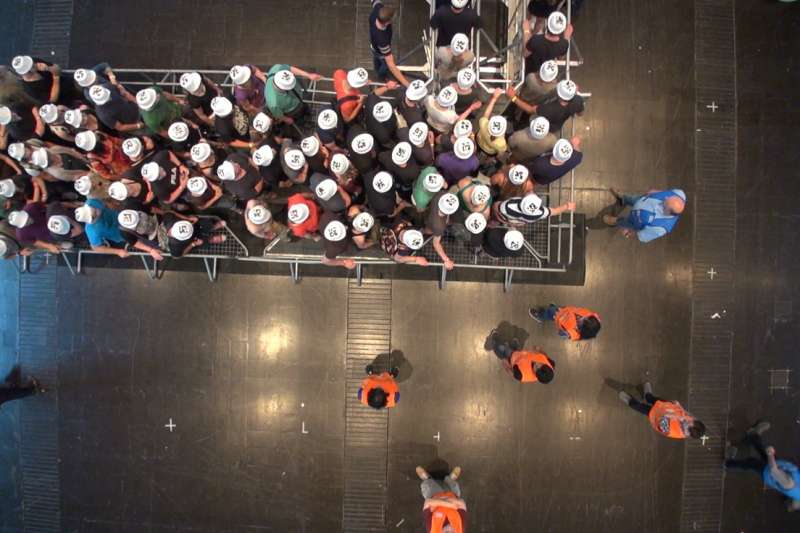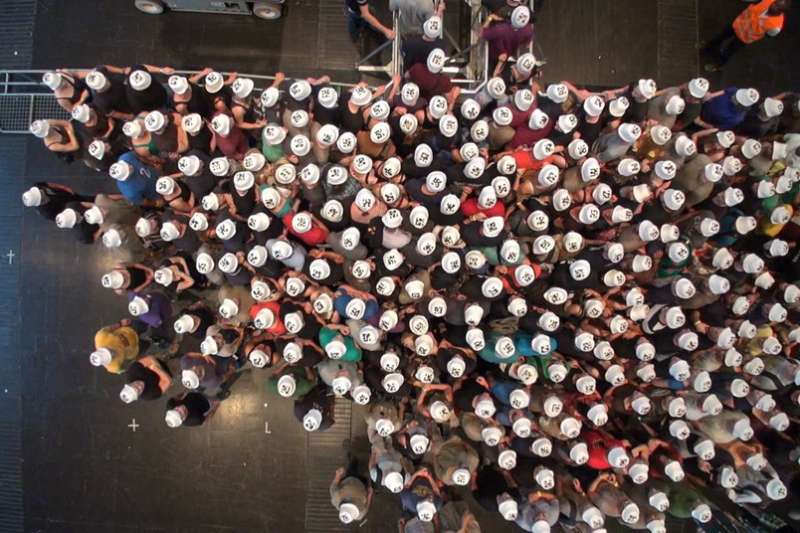Psychological effect against pushing and shoving

Why do barriers ensure that there is less pushing and shoving at the entrance to a concert venue? Researchers from Bochum and Jülich have solved this puzzle in an experiment.
A large crowd of people at the entrance of concert or sport venues can easily result in a dangerous situation. In such cases, it might help to put up artificial barriers to prevent high densities and pushing of people, as has been demonstrated in experiments conducted by researchers from Jülich. The observed effect cannot be explained in purely physical terms; rather, it can only be understood if the psychological aspects are likewise taken into consideration.
The results of the interdisciplinary collaboration between researchers at Forschungszentrum Jülich and Ruhr-Universität Bochum have been published in the journal Plos One.
Physicists and engineers typically use purely physical models in order to conduct computer simulations of crowd dynamics. This approach resembles scientific methods used for calculating the diffusion of particles in a gas or a liquid. However, they are insufficient for understanding the reason why barriers have such a strong impact on the behaviour of pushing and shoving crowds at large events.
"The starting point were experiments with participants where we observed considerable differences in crowd density," explains Prof Dr Armin Seyfried from the Jülich Supercomputing Centre (JSC). One of the aspects analysed in the course of the project "Bausteine für die Sicherheit von Großveranstaltungen" (Safety and Security Modules for Large Public Events, Basigo) in June 2013 was the impact of the physical set-up of entrances on the behaviour of the participants. Events where dangerous situations may easily arise at the entrance to a venue include festivals, concerts and sport events, when eager fans push forward in an uncontrolled manner.
"We asked 270 participants to imagine they were standing at the entrance to a rock concert venue, attempting to get their hands on one of the last remaining tickets," remembers Armin Seyfried. In the first run of the experiment, the participants were free to flock to the entrance unhindered, and a semi-circular throng soon formed in front of the entrance. Whereas in the second run of the experiment, the participants moved in a corridor surrounded by barriers, where the maximum number of people per square metre amounted to six rather than eleven.

Psychological approach needed
Surprisingly, the density was significantly smaller not only directly at the entrance, but also in the outlying area. "This result cannot be explained with purely physical models," says Seyfried. "One has to assume that psychological aspects lead to smaller density in the corridor, in the sense that certain rules are obeyed. However, these rules exist only in our heads," elaborates the physicist.
Social norms apply here in the same way as at a supermarket check-out or at the airport check-in counter; following those rules, people queue in an orderly fashion, rather than attempting to shoulder their way through the crowd to reach their goal as quickly as possible. "It is very interesting that people between the barriers did not push and shove, especially since they had been explicitly asked to hurry," points out social psychologist Dr Anna Sieben from Ruhr-Universität Bochum.
In order to learn more about predominant norms and strategies, she subsequently showed images and videos of the experiment to other participants. "One possible explanation of this behaviour might have something to do with how differently fairness is rated," explains Anna Sieben. "Most people seem to consider admission through a corridor to be the fairer approach. They believe that people who are first in the queue will get in first. This means the question of pushing and shoving may be linked to people's faith in the fairness of the admission method," says Anna Sieben. However, the perceived fairness does not necessary correspond with objective measurements. The analysed experiment shows it is the other way round. "In the corridor more people presumably push to the front, because there is more space," assumes Armin Seyfried. In the crowded semicircle in front of the entrance, on the other hand, there isn't enough space for queue jumping.
More information: Anna Sieben et al, Collective phenomena in crowds—Where pedestrian dynamics need social psychology, PLOS ONE (2017). DOI: 10.1371/journal.pone.0177328



















